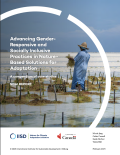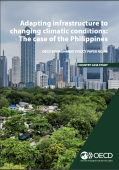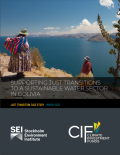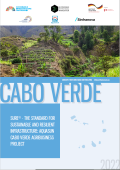
This study looks at how EU initiatives, like the Circular Economy Act and the New European Bauhaus, are leading the way in circular solutions.

This report highlights how inclusive nature-based solutions can strengthen climate resilience for people and ecosystems.

This policy paper presents findings carried out in the Philippines on mainstreaming climate resilience in infrastructure planning and development.

This case study examines Bolivia’s water resource management challenges and highlights significant conflicts and disparities in current water allocation that the transition will need to address.

The case study details Egypt's progress in water sanitation, focusing on the rural regions where decentralized sanitation planning and pro-poor strategies for funding have promoted sanitation infrastructure that meets the social needs of the underdeveloped communities in the Nile Delta.

The case study details the use of the SOURCE platform to strengthen Ukraine's capacity for sustainable infrastructure.

The case study details the use of the Sustainable asset Valuation (SAVi) tool to analyse the Maintaining and Enhancing Water Yield through Land and Forest Rehabilitation (MEWLAFOR) project.

The case study details Ghana's efforts to strengthen the enabling environment to plan, deliver and manage their infrastructure systems to be climate-resilient using the Infrastructure life cycle assessment tool CAT-I.

The case study details the Aquasun Agribusiness Project which requested Sustainability and Resilience appraisal based on the SuRe standard.

The case study details Japan's adoption of Ecosystem-based Disaster Risk Reduction to replace its ageing infrastructure.
